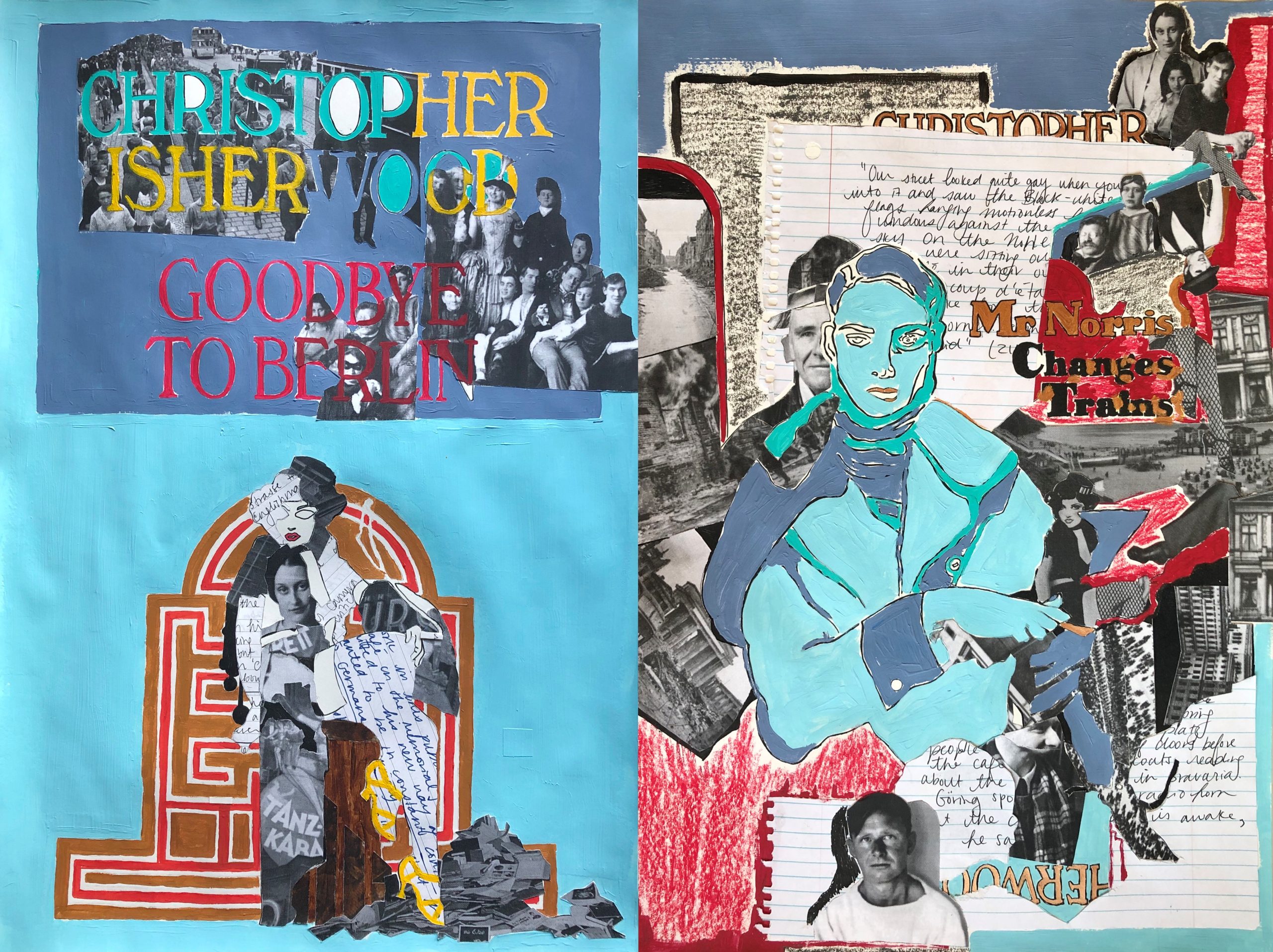Description: For my undergraduate thesis, I traced how Christopher Isherwood’s Berlin novels (Mr. Norris Changes Trains and Goodbye to Berlin) are closely informed by his first-hand experiences of living in Berlin in the early 1930s. I argue that the ethnographic content preserved within his texts, thanks to his time spent in Berlin, demands that his texts be re-read as works of ethnographic fiction. To represent my research, I remade and re-imagined Isherwood’s two book covers by painting images from the covers, yet also including hand-written notes from my research and images from Berlin pre and post 1930s, including images representing the famous gay Berlin sub-culture that drew Isherwood to Berlin in the first place. I also include photographs of the people whom Isherwood bases his main characters on; including Jean Ross who is remade into Sally Bowles, and William Bradshaw, who is based on Isherwood himself. In my image, it is unclear where Berlin ends, and Isherwood’s text begins, and this represents not only the ethnographic content contained within Isherwood’s text, but also how Isherwood often turned to fiction to paradoxically both obscure his experiences with gay Berlin, yet still preserve them in his texts in the face of censorship.
Why did you conduct this research? I conducted this research for I was interested in contemporary experiments in ethnography, and how anthropologists are increasingly turning to fiction as a means of capturing experiences. While many Anthropologists have been incorporating fiction into their current work, this made me wonder how this practice could be applied to the past, specifically for literature which records cultures that are long gone; such as gay Berlin.
Technique: Mixed Media on paper (collage, pencil, acrylic, oil pastels and ink)
Acknowledgements: My images are based on the cover designs from the 1985 edition of Goodbye to Berlin published by Grenada books, and the 1999 edition of Mr. Norris Changes Trains published by Vintage Press. My piece includes hand-written quotes from both novels, as well as quotes from Peter Parker’s biography, Isherwood: A Life Revealed (2004). All of the photographs of 1930s Berlin are pulled from various online sources, and for many of them the photographer of the image is unclear. I would like to specifically acknowledge that a few of my photographs come from the Hirschfeld Institute, which was a private sexology research institute started by started by Dr. Magnus Hirschfeld that campaigned for LGTBQ rights. It was eventually destroyed by the Nazis in the 1930s along with the majority of its research. Isherwood was a friend and admirer of Dr. Hirschfeld, and virtually lived at the institute when he first moved to Berlin. I would also like to acknowledge and thank Professor Allan Hepburn and Professor Lisa Stevenson who supervised my work.

